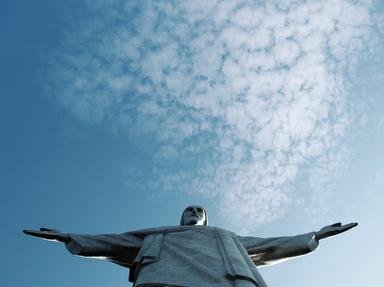Quiz Answer Key and Fun Facts
1. In which of the following ancient cities was the Pyramid of the Sun located?
2. The ancient name of the Pyramid of the Sun is unknown. Which of the following people, who eventually rose to power in the same general location, gave the pyramid its present name when they took control of the area?
3. When newly completed after its second stage of construction, how was the outside of the Pyramid of the Sun decorated?
4. Which of the following has been found underneath the Pyramid of the Sun?
5. For what purpose has it been proven that the Pyramid of the Sun was used?
6. Which of the following is NOT a way that the Pyramid of the Sun compares to the Great Pyramid on the Giza Plateau in Egypt?
7. Some artifacts have been found in the Pyramid of the Sun complex; many of them are arrowheads. From what material, one typically used for arrowheads and knives in ancient Mesoamerica, were the artifacts made?
8. Another artifact found in the Pyramid of the Sun was made of alabaster and was in the shape of which animal that was also important to other groups in Mesoamerica?
9. The Pyramid of the Sun was the tallest pyramid built in the ancient world.
10. Burials of children have also been found at the corners of the Pyramid of the Sun.
Source: Author
ponycargirl
This quiz was reviewed by FunTrivia editor
gtho4 before going online.
Any errors found in FunTrivia content are routinely corrected through our feedback system.
